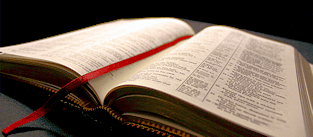Sepharvites

Bible Usage:
- Sepharvaim used 6 times.
- Sepharvites used once.
- Bible Reference: 2 Kings 17:31
Dictionaries:
- Included in Eastons: Yes
- Included in Hitchcocks: Yes
- Included in Naves: Yes
- Included in Smiths: Yes
- Included in Websters: No
- Included in Strongs: Yes
- Included in Thayers: No
- Included in BDB: Yes
Strongs Concordance:
- H5617 Used 1 time
Taken by Sargon, king of Assyria (2 Kings 17:24; 18:34; 19:13; Isaiah 37:13). It was a double city, and received the common name Sepharvaim, i.e., "the two Sipparas," or "the two booktowns." The Sippara on the east bank of the Euphrates is now called Abu-Habba; that on the other bank was Accad, the old capital of Sargon I., where he established a great library. (See SARGON.) The recent discovery of cuneiform inscriptions at Tel el-Amarna in Egypt, consisting of official despatches to Pharaoh Amenophis IV. and his predecessor from their agents in Palestine, proves that in the century before the Exodus an active literary intercourse was carried on between these nations, and that the medium of the correspondence was the Babylonian language and script. (See KIRJATH-SEPHER.)
the two books; the two scribes
An Assyrian city, from which the king of Assyria colonized Samaria.
2 Kings 17:24; 2 Kings 17:31; 2 Kings 18:34; 2 Kings 19:13; Isaiah 36:19; Isaiah 37:13
(the two Sipparas) is mentioned by Sennacherib in his letter to Hezekiah as a city whose king had been unable to resist the Assyrians. (2 Kings 19:13; Isaiah 37:13) comp. 2 Kings 18:34 It is identified with the famous town of Sippara., on the Euphrates above Babylon, which was near the site of the modern Mosaib. The dual form indicates that there were two Sipparas, one on either side of the river. Berosus celled Sippara "a city of the sun;" and in the inscriptions it bears the same title, being called Tsipar sha Shamas , or "Sippara of the Sun"
the sun being the chief object of worship there. Comp. (2 Kings 17:31)
The people of Sepharvaim.
2 Kings 17:31

Bible Usage:
- Sepharvaim used 6 times.
- Sepharvites used once.
- Bible Reference: 2 Kings 17:31
Dictionaries:
- Included in Eastons: Yes
- Included in Hitchcocks: Yes
- Included in Naves: Yes
- Included in Smiths: Yes
- Included in Websters: No
- Included in Strongs: Yes
- Included in Thayers: No
- Included in BDB: Yes
Strongs Concordance:
- H5617 Used 1 time
